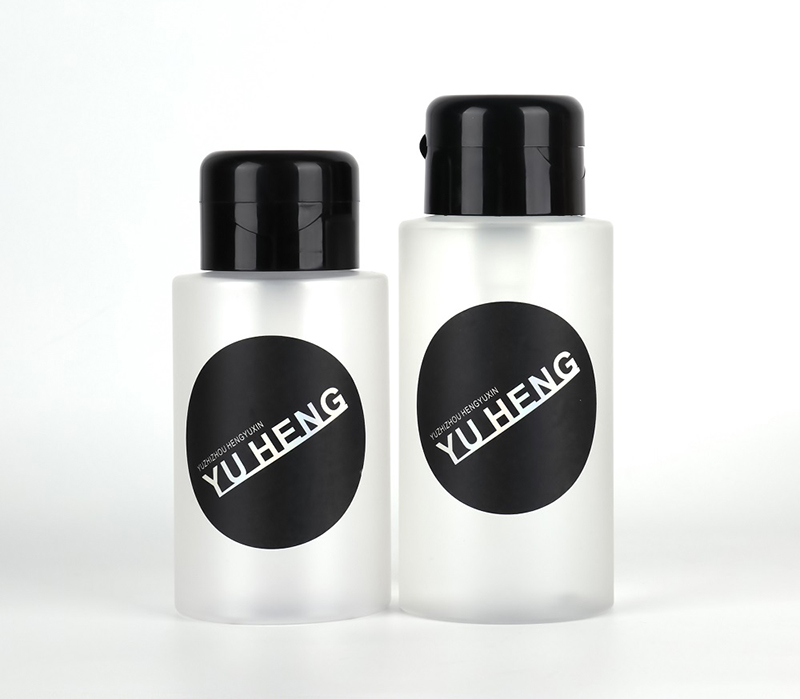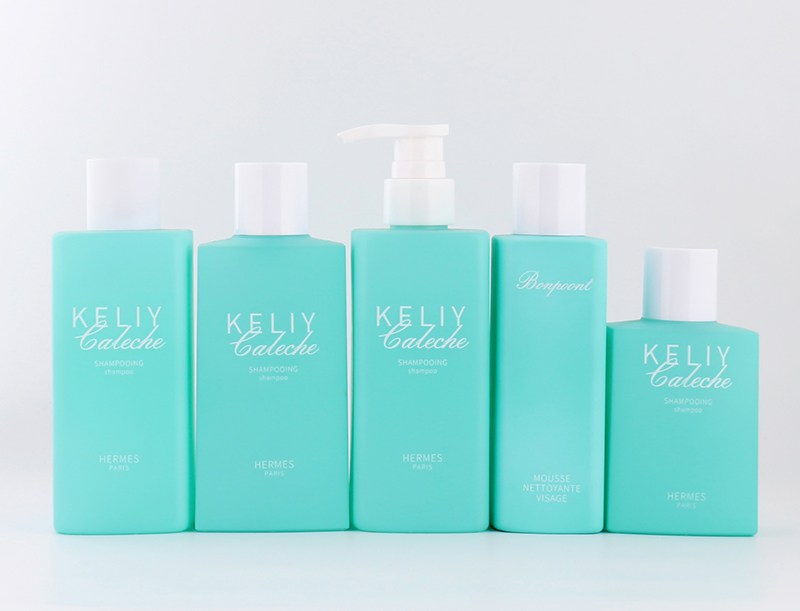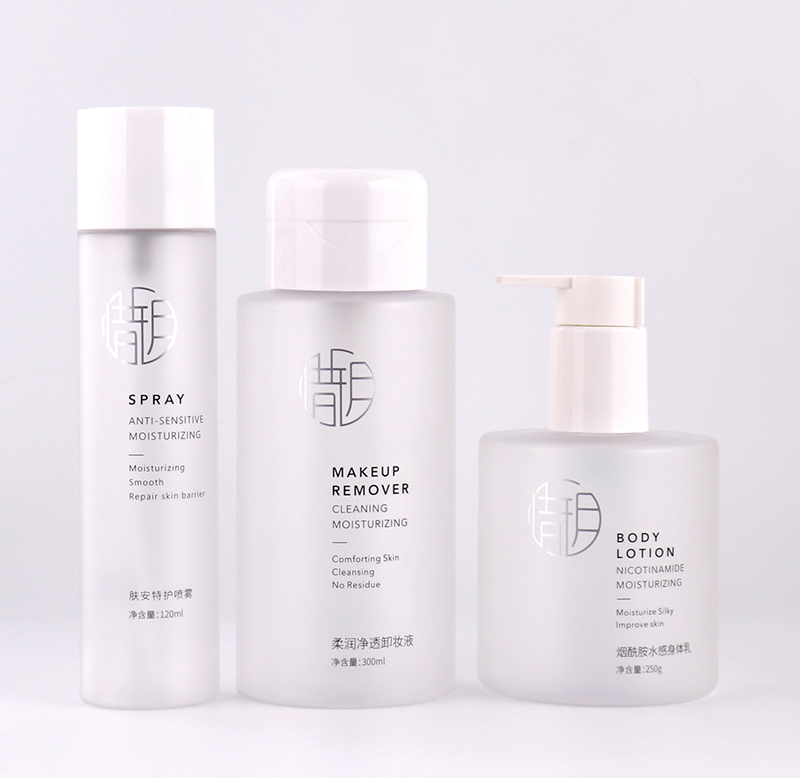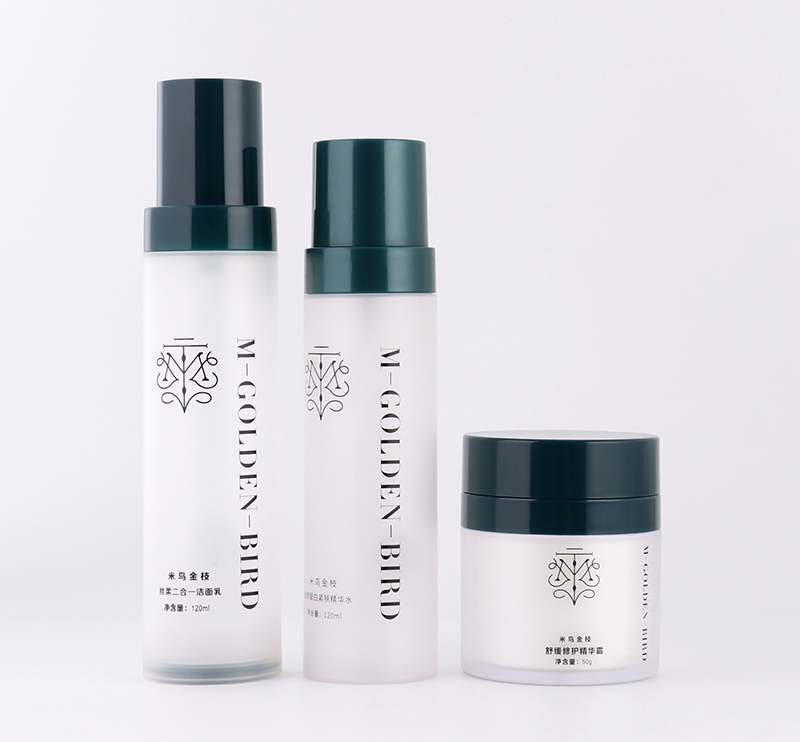The generalized plastic bottle is mainly used for liquid or solid disposable plastic packaging containers for drinks, food, Pickled vegetables, cosmetics, agricultural and veterinary drugs, etc. Plastic bottles have the characteristics of good sealing, non breakage, low cost, high transparency, and food grade raw materials. Cosmetic plastic bottles also require color, texture, appearance, chemical resistance, weather resistance, and other requirements for packaging and product positioning.

Introduction to Plastic Bottles for Cosmetic Packaging Materials
1.Plastic bottles for cosmetics are usually made of materials such as PS, PP, PE, K, AS, ABS, acrylic (PMMA), PET, etc. Products with higher requirements also use materials such as PMMA, PETG, MS, etc.
2.Commonly used for cream bottles, caps, stoppers, and gaskets with thick walls in cosmetics containers, they are injection molded using materials such as PS, AS, PETG/PCTG, and MS; Other lotion bottles and washing bottles with thinner container walls are blow bottles, mostly made of PET. PET blow bottles are formed in two steps, tube embryos are injection molded, and finished products are packed in blow bottles; ABS injection molding is commonly used for pump heads and dust covers.

3. PET/PETG material is an environmentally friendly material that burns into water and carbon dioxide. It has high barrier properties, light weight, non crushing properties, chemical resistance, and strong transparency. It can be made into pearlescent, colored, magnetic white, and transparent materials, and is widely used in gel water packaging. The bottle mouth is generally standard 16 #, 18 #, 22 #, and 24 # caliber, and can be used with a pump head. With the explosive expansion of e-commerce channels, there are countless cosmetic brands, and the demand for makeup bottle production has also increased. The market also urgently needs liquidity for production and sales, which has promoted the development of PETG material injection molding technology that can be formed in one step. Due to the consideration of customer needs, PETG also has factories that use tube blanks for blow molding, avoiding the appearance of joint lines generated by one-step methods.

4. PMMA acrylic material is suitable for injection molding bottles, with high transparency but poor chemical resistance. Generally, it cannot be directly filled with paste and needs to be equipped with inner liner barriers. Filling should not be too full to prevent the paste from entering between the inner liner and the acrylic bottle, in order to avoid cracking and chemical changes. During transportation, packaging requirements are high, and due to scratches, it looks particularly obvious, has high permeability, and appears to have a thick upper wall, but the price is quite expensive.

5. AS, ABS: AS has better transparency than ABS and is used more for bottle bodies; ABS has good toughness, strong overall performance, and less transparency than AS. It is commonly used for bottle caps and pump heads, and some are made of PC material for sealing bottle caps.
6. Mold development cost: Blow bottle molds cost 1500-4000 yuan, injection molds cost 8000-20000 yuan, and stainless steel materials are more expensive than alloy materials for molds. However, they are durable, and the number of molds produced at a time depends on the production demand. If the production volume is large, you can choose one out of four or one out of six molds, and customers can decide on their own.

7. The order quantity is generally 3000-10000 pieces, and the colors can be customized. Usually, the main colors are matte and magnetic white, or the effect of adding pearl powder. Although the bottles and caps are matched with the same color masterbatch, sometimes the colors displayed may differ due to the different materials used for the bottles and caps.
8. Silk screen printing includes both regular ink and UV ink. UV ink has a good effect, luster, and three-dimensional feeling. During production, the color should be confirmed by printing a plate first. The silk screen effect may vary for different materials, and the performance of some materials may have requirements for printing oil, and sample testing and verification are also required.

9. The processing techniques such as hot stamping and silver stamping are different from those of printing gold powder and silver powder. Hard materials and smooth surfaces are more suitable for hot stamping and silver stamping, while soft surfaces have poor hot stamping effect and are prone to detachment. The glossiness of hot stamping gold and silver is better than that of printing gold and silver.
10. Bottle caps are generally equipped with inner gaskets, pull caps, stoppers, and very few are equipped with small spoons or droppers, mainly considering their sealing and convenience of use.

11. The production cycle is relatively moderate, about 15 days. Silk screen cylindrical bottles are calculated based on single color, while flat or irregular bottles are calculated based on double or multiple colors. Usually, the first silk screen printing fee or fixture fee is charged. The unit price for silk screen printing is generally 0.1 to 0.15 yuan per time, and the screen printing fee is 100 to 200 yuan per model, and the fixture fee is about 50 yuan per piece.




